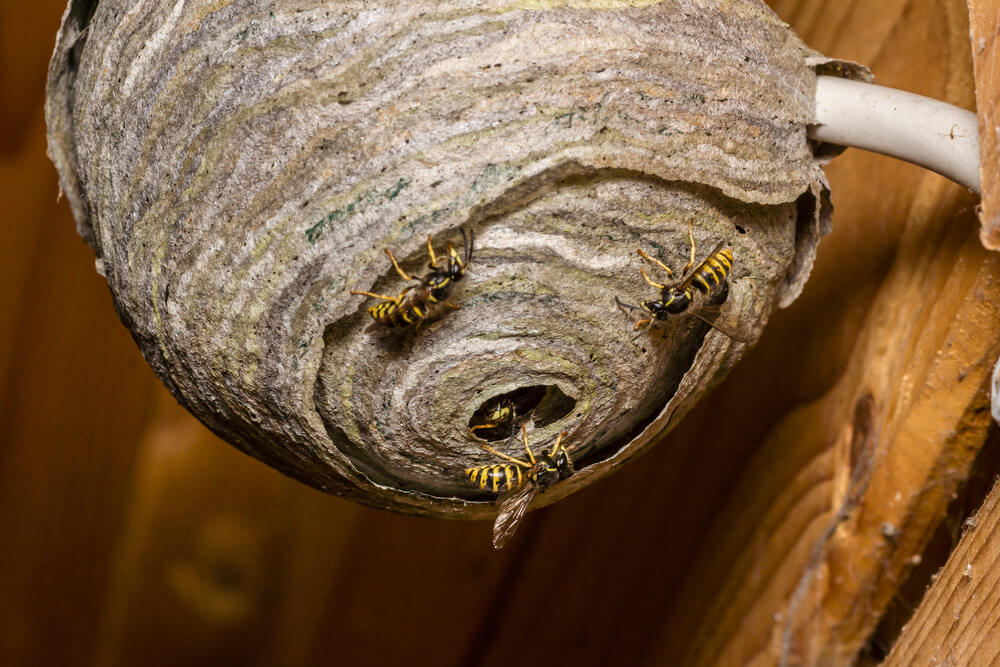How To Tell The Difference Between Bees, Wasps, & Hornets Nests

While bees, wasps, and hornets are all essential parts of our ecosystem, they can become a threat when they build their nests in the vicinity of your home. Each one of these flying insects can deliver painful stings that can have dire consequences if the victim is allergic. Studies show that more than 500,000 people are sent to the emergency room annually due to insect stings! While many people can recognize their differences by looking at the insects themselves, identifying the differences between their nests can be a little more difficult. In this article, we’ll go over some key characteristics of each of these nests to help you identify and deal with them! If you are experiencing a bee, hornet, or wasp problem in Massachusetts or Southern New Hampshire, Absolut Pest Control is here to help! Contact us today at (978) 388-4589 or fill out the contact form on our website!
Identifying Wasps Nests
“Paper Wasps” or “Umbrella Wasps” get their name from the characteristics of their nests. These nests are built from a paper-like material and are often in a shape that resembles an umbrella. Their nests are often found in the area surrounding a home, hanging from trees, porch ceilings, decks, and more. One key identifier for these nests is that they sometimes contain open, uncovered cells where the insects lay their eggs. Paper wasps are known to sting people when their nests are disturbed or if they feel threatened.
Identifying Bees Nests
Honey bees gather pollen and nectar from flowers to feed their colonies. These bee’s nests, called hives, are often found in areas with an abundant supply of flowering plants. Honey bee hives can be identified by their signature hexagonal wax cells, a characteristic that is often pictured when people think of a stereotypical bee’s nest. You can keep a lookout for these bee hives in areas like tree limbs, tires, utility poles, mailboxes, flowerpots, and even bird houses. Much like with other stinging insects, honey bees are not violent by nature but will sting if they feel threatened.
Identifying Hornets Nests
European hornet’s nests are commonly found in sheds, attics, tree cavities, and other enclosed places. One key identifying factor for these nests is that they are typically built at least 6 feet above the ground. Many times, what people believe to be hornets are actually yellow jackets or ground wasps, both of which construct subterranean nests in old animal burrows or other small holes in the ground.
Contact Absolut Pest Control!
If you have any questions about stinging insects or believe there’s an infestation on your Massachusetts or New Hampshire property, contact Absolut Pest Control! We provide ethical bee removal services at affordable prices throughout the region! Contact us today by giving us a call at (978) 388-4589 or by filling out the contact form on our website!

Leave a Reply